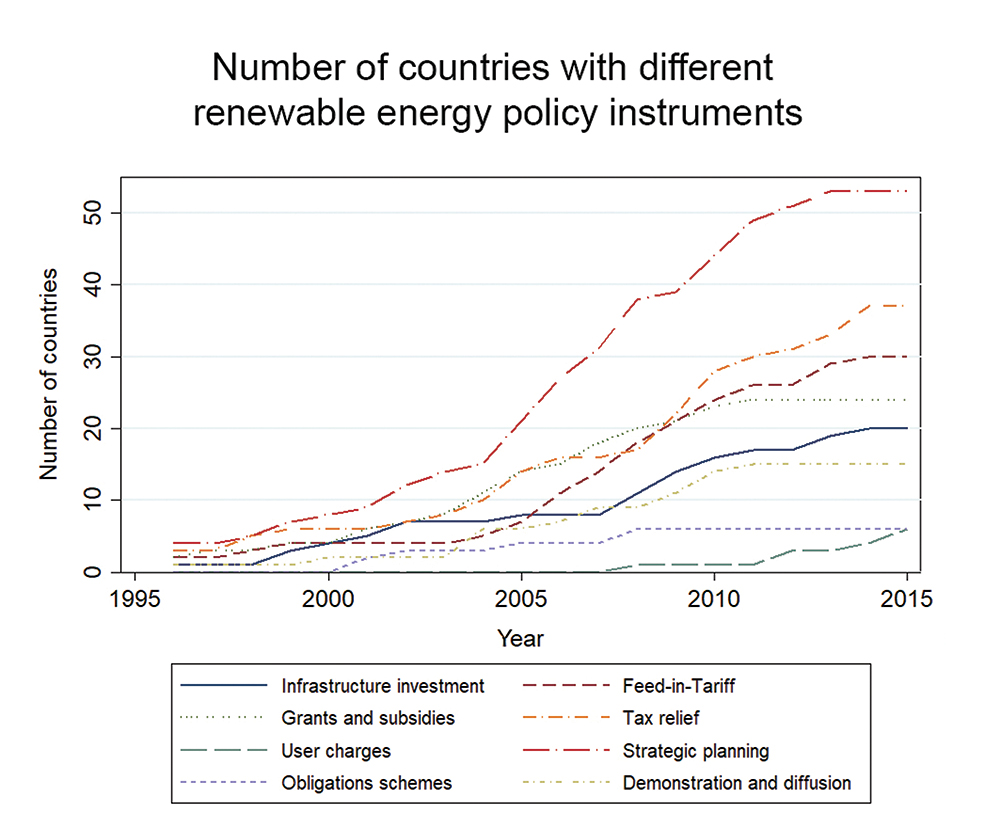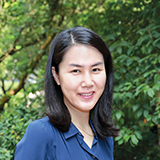November 2020 | Volume 22 No. 1
Cover Story
Power Plays
For all the publicity and enthusiasm generated around renewable energies such as solar, wind and biomass, their actual adoption has not been so remarkable. Although their usage in electricity generation has increased from 0.6 per cent of the global total in 1973 to eight per cent in 2016, they are still a small portion of all energy sources. Moreover, in terms of quantities, we use twice as much fossil fuel today to generate energy as we did in the 1970s, even when renewables are accounted for.
While there are technical stumbling blocks to renewables, such as the need for better batteries to store solar energy, there are also political blocks. Dr Kim Jung Eun of the Department of Politics and Public Administration has spent the past decade investigating the problem of how to effectively transfer renewable energy technology from the developed countries where it is created, to developing countries.
“Developed countries have the capacity to innovate and implement new technologies and policies, but developing countries are still more focussed on economic development. Even if they have the capacity to implement a policy, there is not much motivation to do it or to implement it fully,” she said.
Good policy designs are important because otherwise it is difficult to persuade private businesses anywhere to change their behaviour or adopt new technology. The most innovative policies tend to come from developed countries, such as the Renewable Portfolio Standard (RPS) in the United States, a regulatory policy that sets quantitative targets for renewables and lets utilities trade credits, and the Feed-in Tariff (FiT), an incentive scheme used in places like Germany that lets people sell energy generated through renewable means to the electricity grid.
Regulation better than incentives
To date, FiT has made more inroads in developing countries, but Dr Kim’s research suggests this might not be the most effective approach.
“My research has found that in developing countries, regulation works better than incentives in promoting renewable energy use,” she said.
Developing countries also need support beyond simply adopting a technology or policy from abroad. Dr Kim looked at transfers of non-hydro renewable energy technology to developing countries and found the transfer alone did not really increase recipients’ capacity.
“You need a maintenance programme to go with it. In the past, this kind of knowledge exchange tended to happen without consideration of the local context, although this is changing. My hypothesis is that that approach can affect recipient countries’ motivation, which in turn can affect the success of these transfers,” she said.
Consideration also needs to be given to the kinds of renewable energies that are being used. Dr Kim has recently been looking at how policy design affects the technology adopted, initially focussing on developed countries where the policies originate (she plans to extend this to developing countries later).
“There are two kinds of policies regarding technology diffusion. One is tech-neutral, the other is tech-specific. If the policy specifies the technology to be used, then that technology will grow its share in the market. But if the technology is not specified, then the market will choose the most cost-effective option,” she said.

Market gets locked in
Wind is usually the cheaper option and the one utilities tend to opt for when faced with a policy that requires them to derive a certain percentage of energy from unspecified renewables. However, this approach may stunt the development of other technologies, such as solar and biomass. On the other hand, if a policy stipulates that, say, two per cent of renewable energy must be solar energy, it leaves the door open for future expansion of this technology.
“Once a technology is dominant in the market, a political economy develops around it. The market gets locked in. But solar and other technologies that are now less cost-effective might become more efficient with future innovation, so you want to keep those technologies for now that may have future potential,” she said.
Dr Kim cautions against raising hopes too high over renewable energy because of other limits to its growth. Renewable energy tends to be more intermittent than coal, gas, hydro or nuclear power. Moreover, wind farms require large areas of land and tend to be located far from population sources, and solar relies on batteries to store electricity for use at night. These batteries contain materials with ethical issues, such as cobalt which is toxic and mined in places like the Democratic Republic of the Congo where child labour may be used.
“There is a great deal of effort going into renewable energy and a lot of motivations. It’s all a bit messy. Its use will definitely grow, but I don’t see there being a complete transition to renewables in the short term,” she said.
There is a great deal of effort going into renewable energy and a lot of motivations. It’s all a bit messy. Its use will definitely grow, but I don’t see there being a complete transition to renewables in the short term.

DR KIM JUNG EUN

